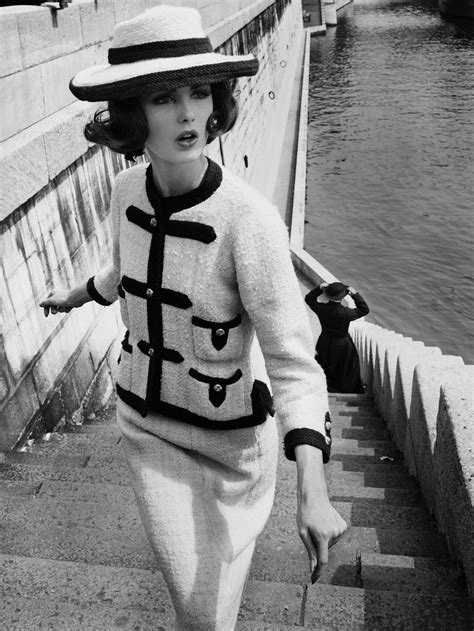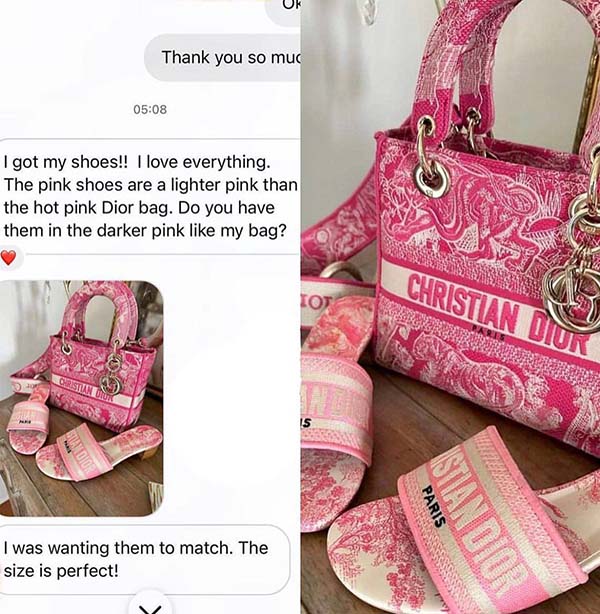chanel 1920s designs|coco chanel fashion trends : 2024-09-29 Gabrielle Chanel creates Gardénia with Ernest Beaux. A white flower like the camellia, Chanel’s iconic flower with a scent that cannot be extracted, the Gardénia has a more . The capital, Valletta, is just across the water, so you’ll be able to spot its skyline from the Tigne Seafront promenade. Closer to home, the hotel’s got its own beach club with an infinity pool shaped like a giant teardrop. Holidays here come with 24/7 support on the TUI app and by phone.
0 · coco chanel style
1 · coco chanel outfit
2 · coco chanel fashion trends
3 · coco chanel fashion history
4 · coco chanel fashion
5 · coco chanel 1920s fashion
6 · chanel flower vintage
7 · Altro
8 · 1920s fashion trends
One of the cheapest Rolex watches is the Oyster Perpetual, which usually costs around $5,000. This model is made of oystersteel, an affordable type of steel. How do I fit a Rolex bracelet?
chanel 1920s designs*******Gabrielle Chanel creates Gardénia with Ernest Beaux. A white flower like the camellia, Chanel’s iconic flower with a scent that cannot be extracted, the Gardénia has a more . Coco Chanel introduced her first two-piece set in the 1920s, inspired by menswear and sportswear, as well as the suits of her then lover, the Duke of Westminster. Post 1920s, fashion was much less restrictive (the bustier and corset were done away with), and looser fabrics were embraced. This was all thanks to Chanel's .coco chanel fashion trendsGabrielle Chanel worked with some of the best designers and jewellery-makers in Europe to produce her jewellery collections, including Count Étienne de Beaumont from the .Among the key designers who made a bold and lasting impression on women’s fashion in the twentieth century, Gabrielle “Coco” Chanel (1883–1971) deserves special .chanel 1920s designs coco chanel fashion trends Gabrielle “Coco” Chanel was one of the 20th century’s most formative couturiers. Established first as a milliner, the French designer soon became synonymous with a new style of dressing that did away .The boyish look and the short skirts of the 1920s flapper seemed to disappear overnight. Chanel's designs for film stars in Hollywood were not successful and had not enhanced her reputation as expected. More .

More than any other designer of the twentieth century, Coco Chanel revised and adapted fashion to the tenets of utility and integrity of materials, tenets that are the defining .In fashion folklore, Gabrielle Chanel is famously credited as the designer who popularised trousers, making them a key piece in women's wardrobes, and also for helping to liberate women from.The exhibition begins with a presentation of Chanel's groundbreaking designs from the 1920s, including a jersey dress and cardigan coat, an early example of the sportswear .Gabrielle Chanel creates Gardénia with Ernest Beaux. A white flower like the camellia, Chanel’s iconic flower with a scent that cannot be extracted, the Gardénia has a more distinctive olfactory signature. Reproduced in 1983, it has formed part of Les Exclusifs collection since 2007. Coco Chanel introduced her first two-piece set in the 1920s, inspired by menswear and sportswear, as well as the suits of her then lover, the Duke of Westminster. Post 1920s, fashion was much less restrictive (the bustier and corset were done away with), and looser fabrics were embraced. This was all thanks to Chanel's revolutionary designs. However, it also meant you needed another way to give yourself a feminine shape.Gabrielle Chanel worked with some of the best designers and jewellery-makers in Europe to produce her jewellery collections, including Count Étienne de Beaumont from the 1920s, Maison Gripoix from the 1930s, Fulco di Verdura from 1933 and François Hugo in .
Among the key designers who made a bold and lasting impression on women’s fashion in the twentieth century, Gabrielle “Coco” Chanel (1883–1971) deserves special recognition. Born in Saumur, in the Loire Valley of France, Chanel survived an impoverished childhood and strict convent education.
Gabrielle “Coco” Chanel was one of the 20th century’s most formative couturiers. Established first as a milliner, the French designer soon became synonymous with a new style of dressing that did away with corsets and layers of trimmings and tulles, instead embracing a more fluid silhouette shaped around a more androgynous ideal.
The boyish look and the short skirts of the 1920s flapper seemed to disappear overnight. Chanel's designs for film stars in Hollywood were not successful and had not enhanced her reputation as expected. More significantly, Chanel's star had been eclipsed by her premier rival, the designer Elsa Schiaparelli.
More than any other designer of the twentieth century, Coco Chanel revised and adapted fashion to the tenets of utility and integrity of materials, tenets that are the defining features of.

In fashion folklore, Gabrielle Chanel is famously credited as the designer who popularised trousers, making them a key piece in women's wardrobes, and also for helping to liberate women from.The exhibition begins with a presentation of Chanel's groundbreaking designs from the 1920s, including a jersey dress and cardigan coat, an early example of the sportswear principle of separates dressing.
Gabrielle Chanel creates Gardénia with Ernest Beaux. A white flower like the camellia, Chanel’s iconic flower with a scent that cannot be extracted, the Gardénia has a more distinctive olfactory signature. Reproduced in 1983, it has formed part of Les Exclusifs collection since 2007.
Coco Chanel introduced her first two-piece set in the 1920s, inspired by menswear and sportswear, as well as the suits of her then lover, the Duke of Westminster.
Post 1920s, fashion was much less restrictive (the bustier and corset were done away with), and looser fabrics were embraced. This was all thanks to Chanel's revolutionary designs. However, it also meant you needed another way to give yourself a feminine shape.chanel 1920s designsGabrielle Chanel worked with some of the best designers and jewellery-makers in Europe to produce her jewellery collections, including Count Étienne de Beaumont from the 1920s, Maison Gripoix from the 1930s, Fulco di Verdura from 1933 and François Hugo in .Among the key designers who made a bold and lasting impression on women’s fashion in the twentieth century, Gabrielle “Coco” Chanel (1883–1971) deserves special recognition. Born in Saumur, in the Loire Valley of France, Chanel survived an impoverished childhood and strict convent education.
Gabrielle “Coco” Chanel was one of the 20th century’s most formative couturiers. Established first as a milliner, the French designer soon became synonymous with a new style of dressing that did away with corsets and layers of trimmings and tulles, instead embracing a more fluid silhouette shaped around a more androgynous ideal.The boyish look and the short skirts of the 1920s flapper seemed to disappear overnight. Chanel's designs for film stars in Hollywood were not successful and had not enhanced her reputation as expected. More significantly, Chanel's star had been eclipsed by her premier rival, the designer Elsa Schiaparelli.More than any other designer of the twentieth century, Coco Chanel revised and adapted fashion to the tenets of utility and integrity of materials, tenets that are the defining features of.In fashion folklore, Gabrielle Chanel is famously credited as the designer who popularised trousers, making them a key piece in women's wardrobes, and also for helping to liberate women from.The exhibition begins with a presentation of Chanel's groundbreaking designs from the 1920s, including a jersey dress and cardigan coat, an early example of the sportswear principle of separates dressing.
Gabrielle Chanel creates Gardénia with Ernest Beaux. A white flower like the camellia, Chanel’s iconic flower with a scent that cannot be extracted, the Gardénia has a more distinctive olfactory signature. Reproduced in 1983, it has formed part of Les Exclusifs collection since 2007. Coco Chanel introduced her first two-piece set in the 1920s, inspired by menswear and sportswear, as well as the suits of her then lover, the Duke of Westminster.
Post 1920s, fashion was much less restrictive (the bustier and corset were done away with), and looser fabrics were embraced. This was all thanks to Chanel's revolutionary designs. However, it also meant you needed another way to give yourself a feminine shape.
Gabrielle Chanel worked with some of the best designers and jewellery-makers in Europe to produce her jewellery collections, including Count Étienne de Beaumont from the 1920s, Maison Gripoix from the 1930s, Fulco di Verdura from 1933 and François Hugo in .
Among the key designers who made a bold and lasting impression on women’s fashion in the twentieth century, Gabrielle “Coco” Chanel (1883–1971) deserves special recognition. Born in Saumur, in the Loire Valley of France, Chanel survived an impoverished childhood and strict convent education. Gabrielle “Coco” Chanel was one of the 20th century’s most formative couturiers. Established first as a milliner, the French designer soon became synonymous with a new style of dressing that did away with corsets and layers of trimmings and tulles, instead embracing a more fluid silhouette shaped around a more androgynous ideal.
The boyish look and the short skirts of the 1920s flapper seemed to disappear overnight. Chanel's designs for film stars in Hollywood were not successful and had not enhanced her reputation as expected. More significantly, Chanel's star had been eclipsed by her premier rival, the designer Elsa Schiaparelli.
More than any other designer of the twentieth century, Coco Chanel revised and adapted fashion to the tenets of utility and integrity of materials, tenets that are the defining features of.
Historical Events for the Year 1951. 4th January » Korean War: China called Chinese and North Korean forces Third Battle of Seoul known as capture Seoul. 6th January » .
chanel 1920s designs|coco chanel fashion trends











